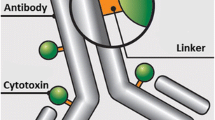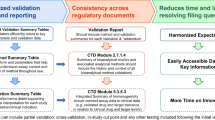Abstract
While chemistry provides the framework for understanding the structure and function of biomolecules, the immune system provides a highly evolved natural process to generate one class of complex biomolecules-the antibodies. A combination of the two could be exploited to generate new classes of molecules with novel functions. Indeed, one example of this productive interplay is the generation of catalytic antibodies or abzymes. A catalytic antibody is a sort of natural artificial enzyme — it is a natural protein synthesized by the usual biological processes and is intended to catalyze a reaction for which no real enzyme is available. The essential idea is to raise antibodies to a molecule considered to mimic the transition state intermediate of a reaction that is to be catalyzed i.e., a molecule resembling a strained structure intermediate between the substrate and product, believed to occur in the reaction pathway. The hope is that some of the antibodies produced will happen to possess groups capable of promoting the reaction.
Similar content being viewed by others
Suggested Reading
L Pauling, Chemical Achievement and Hope for the Future, American Scinetist, Vol.36, pp.51, 1948.
P G Schultz and R A Lerner, From Molecular Diversity to Catalysis: Lessons from the Immune System, Science, Vol.269, pp.1835–1842, 1995.
R A Lerner and S J Benko-vic, Principles of Antibody Catalysis, Bioessays, Vol.9, pp.107–112, 1988.
S Lacroix-Desmazes, B Wootla, S Delignat, S Dasgupta, V Nagaraja, M D Kazatchkine and S Kaveri, Pathophysiology of catalytic antibodies, Immunol. Letts., Vol.103, pp.3–7, 2006.
L H Jones and P Wentworth, The therapeutic potential for catalytic antibodies: From a concept to a promise, Mini Reviews in Medicinal Chemistry, Vol.1, pp.125–132, 2001.
S Paul, Y Nishiyama, S Planque and H Taguchi, Theory of proteolytic antibody occurrence, Immunol. Letts., Vol.103, pp.8–16, 2006.
D Hilvert, Critical analysis of antibody catalysis, Annu. Rev. Biochem., Vol.69, pp.751–793, 2000.
R A Lerner, S J Benkovic and P G Schultz, At the Crossroads of Chemistry and Immunology: Catalytic Antibodies, Science, Vol.252, pp.659–667, 1991.
H Surya Prakash Rao, Capping Drugs: Development of Prodrugs, Resonance, Vol.6, No.2, pp.19–27, 2003.
Author information
Authors and Affiliations
Corresponding author
Additional information
Desirazu N Rao is a Professor in the Department of Biochemistry, Indian Institute of Science, Bangalore, India. His research interests are in the area of DNA-Protein Interactions using restriction-modification enzymes and DNA mismatch repair proteins as model systems.
Bharath Wootla is a doctoral student in the ‘Team-16’ of UMR S 872, at the Centre de Recherche des Cordeliers, 75006 Paris-France and at the Université de Technologie de Compiègne, 60203 Compiègne-France. His research interests are in the field of antibody catalysis and immune response to coagulation protein ‘Factor VIII’.
Rights and permissions
About this article
Cite this article
Rao, D.N., Wootla, B. Catalytic antibodies: Concept and promise. Reson 12, 6–21 (2007). https://doi.org/10.1007/s12045-007-0110-6
Published:
Issue Date:
DOI: https://doi.org/10.1007/s12045-007-0110-6




